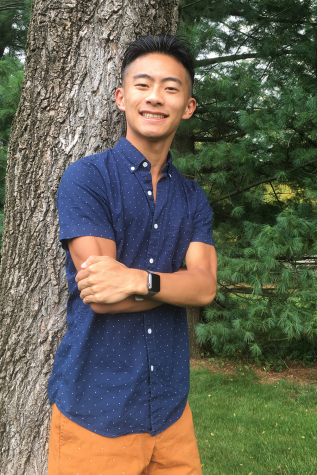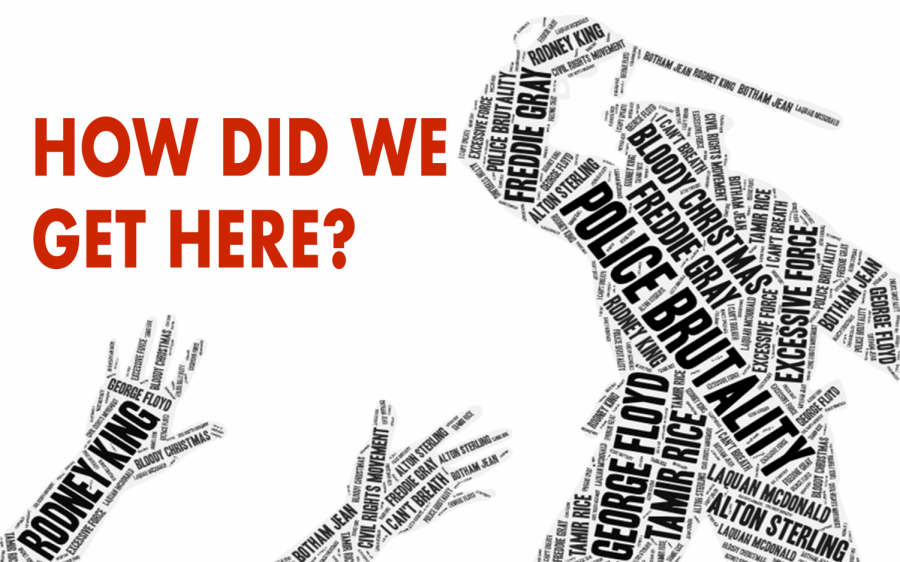How did we get Here?: The History of Police Brutality in Modern America
Police brutality has long arduous history in the United States and is strongly connected to continuing questions and issues surrounding race relations and civil rights in America.
The motto of “To Protect and Serve” has been a saying traditionally tied to America’s police. Representing the general duties of our nation’s law enforcement officers, the expression has come to define the idealized view of the police: servants of the people, and defenders of the rule of law. The legitimacy of this idealized view has been continuously questioned however, as the issue of brutality and violence by American law enforcement had instead conjured a less morally just reputation for the nation’s police officers.
On May 25th, 2020, 46-year-old George Floyd was killed after Minneapolis Police Officer Derek Chauvin knelt on Floyd’s neck for 8 minutes and 46 seconds. Floyd’s death has caused the Twin Cities of Saint Paul and Minneapolis to erupt in protests and riots, while demonstrations and unrest have sprung up across the country. Floyd’s death and other similar events have in turn acted as a grim reminder of the continued specter of police brutality in the United States.
Cases like Floyd’s death and many others bring up the question: how did we get here? While it could be assumed that police brutality is a recent development, the complex and perhaps, broken relationship between citizens and the police is nothing new. Cases of police brutality have been an occurrence in modern America for close to 70 years and are deeply connected to race relations in the United States.
Police Brutality is defined as a civil rights violation in which a police officer utilizes “excessive force” against a civilian, in turn violating their civil rights protected by the Fifth and Fourteenth Amendments of the Constitution.
Although no exact origin point of police brutality in this country can be pinpointed, one of the earliest documented incidents occurred in 1951, in what is now referred to as “Bloody Christmas.” Seven civilians were severely beaten on Christmas Day by up to 50 members of the Los Angeles Police Department as retaliation for injuries suffered by one of the arresting officers. The following coverup by the LAPD and associated indictments resulted in five officers being convicted for assault while many other officers were either transferred or temporarily suspended.
The issue of police brutality intensified as the Civil Rights Movement of the 1950s and 60s began to take shape. Amidst over a decade of demonstration and civil disobedience in pursuit of racial equality , state and local bodies utilized the force of the police as a means of quelling protests. The deployment of police was in turn defined by the use of excessive force as well as violence on generally nonviolent demonstrators.
Tactics still present today such as the use of tear gas, and more aggressively, the turning of police dogs on protestors became prevalent during the Birmingham Campaign of 1963 and Selma-Montgomery March of 1965. The televised recordings of such police brutality exposed Americans across the country to the existence of these practices for the first time, leading to a growing sympathy for demonstrators and outcries against excessive force by the police.
The brutality of the period offered a sense of hope, however — that with these issues brought to light, perhaps moves to fix them could begin to be made. Such stances were echoed by figures like Dr. Martin Luther King whose address at the 1963 March on Washington included the line, “We can never be satisfied as long as the Negro is the victim of the unspeakable horrors of police brutality.”
Some progress would be made in the intervening decades, as new legislation sought to further regulate police forces and offer victims more expansive recourse. Federal Laws such as Section 1983 of Chapter 21, of Title 42 of the US Code offered more ability for police officers to be legally punished for brutality. Meanwhile, the legal precedent established by the rulings in Supreme Court cases such as Tennessee v. Garner (1985) and Graham v. Connor (1989) offered Constitutional protections and increased police regulation, respectively.
The overall magnitude of this progress would be brought into question, however, as the case of Rodney King once more demonstrated the continuing issue of police brutality. In 1991, the unarmed King was severely beaten by members of the LAPD during his attempted arrest and was subsequently hospitalized. The subsequent acquittal of four of the involved officers resulted in Los Angeles descending into six days of riots.
Through a baptism of fire in the shape of riots, the aftermath of Los Angeles protests brought hope as it became the wakeup call needed to achieve comprehensive change. For the LAPD, King’s beating exposed a force tainted by prejudice and aggressive tactics, which would be gradually reformed in the following years. Although promising, the lessons learned in 1992 would fail to usher in comprehensive change, as the arrival of the new millennium brought with it more cases of police brutality on an increasingly documented level.
In the past two decades, the advent of social media and the formation of groups like Black Lives Matter have helped to highlight the continuation of police brutality and how law enforcement disproportionately targets African Americans. These two forces have helped to raise significant national as well as global awareness about cases such as the deaths of Eric Garner, Freddie Gray, Tamir Rice, Alton Sterling, Laquan McDonald, Botham Jean, and of course, George Floyd; all of whom were African American men killed directly or indirectly by the police.
Reports of police brutality have continued to permeate the American consciousness despite continuing attempts to reform the nation’s police forces. Efforts such as the introduction of more stringent training and body cameras have sought to make police forces more restrained and transparent – though the success of such reforms continues to be questioned today.
With widespread demonstrations across the country currently, the national response by America’s police forces have also offered new accusations of police brutality. In Seattle, a police officer was filmed pressing their knee on a protestor’s neck. In Atlanta, two officers were fired after being caught using “excessive force” on two protestors.
In New York City, video footage captured a police vehicle driving into protestors while two other protestors were hospitalized after altercations with the NYPD. Meanwhile in Minneapolis, footage has shown riot police hitting civilians on their porches with rubber bullets. These incidents and many others have demonstrated for activists that despite awareness raised, police brutality continues to haunt America.
Having examined close to seven decades of police brutality, can we now answer the question of how did we get here? In a word, perhaps; police brutality can be seen as a story of a continuing cycle of violence and death, a cycle which is continued by a failure to achieve comprehensive reform, and a cycle which will continue unless we strive to repair a broken system or fight to change it. Breaking the cycle means fixing a broken system, and if we are able to do so, then perhaps we may begin to heal.

Senior Lucas Zhang is a second-year staff reporter and Our World editor for the Spotlight. He is also President of Student Council, a member of the Speech...


